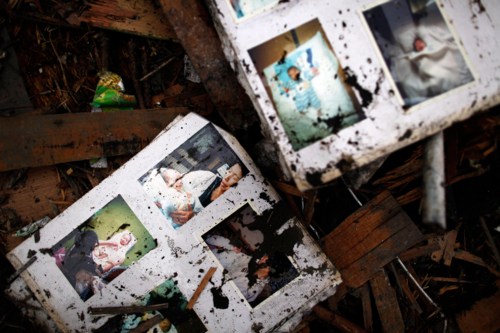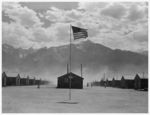
Reuters photographer Damir Sagolj has a knack for photographing photographs. Lucaites writes very thoughtfully on the universal power of this photo, for example, of family photo albums buried amidst the rubble of the Japanese tsunami.
But I have to take some issue with his premise, and with the very title of his photojournalism blog: No Caption Needed. Because yes, we all have stashes of snapshots to mark the important moments, and to remember the important people in our lives. And so yes, we can feel a deep, species-level connection when we see someone else's waterlogged baby pictures, and we can almost imagine what it might be like to lose everything, to have our lives, our worlds turned upside-down in the matter of one terrifying hour.
But these photos belong to someone. They are of someone, who lived in a place. Who may be alive, or not, whose family may be alive, or safe, or looking for them, or not. Stripping a photos's basic information away in the name of some abstract universal "human" experience does those people a profound disservice.
"No Caption Needed" elides a larger, more profound, or more challenging reality: No Caption Available. These tragedies happened to actual people, with names, and stories, and histories, and families, but all our system and civilization is able to tell us here is that a news service photographer took a photo probably two days ago, and probably in Natori. And all we're really able to do with it is look and text some donations.
The Family of Man [nocaptionneeded.com via @jmcolberg]






Thank you for saying that. It is hard to feel less than heartbroken when looking at images of other people's tragedies, and at the same time so difficult to feel like more than a helpless voyeur, at best.